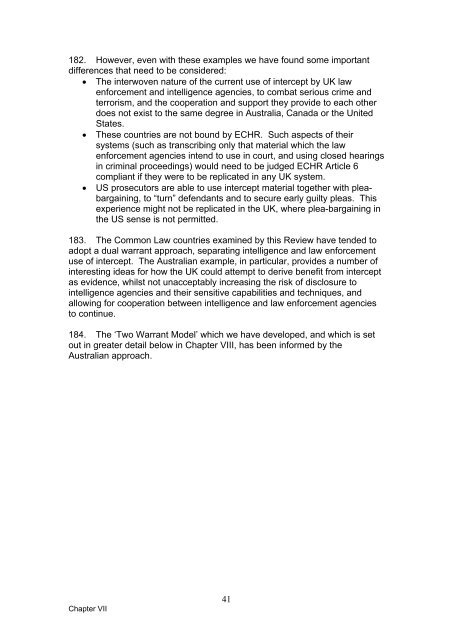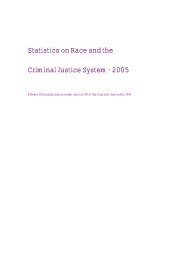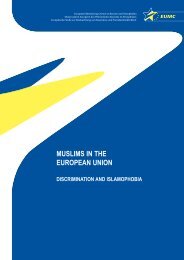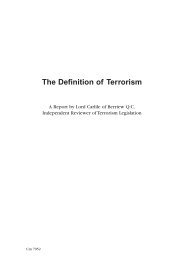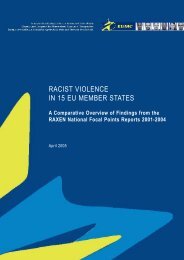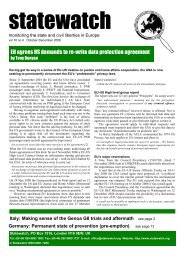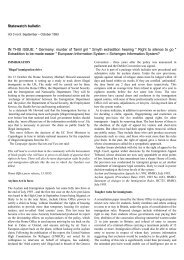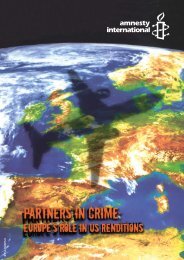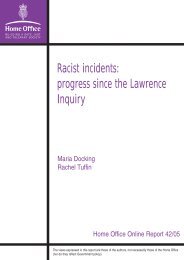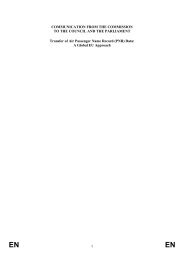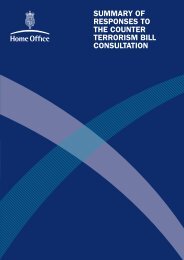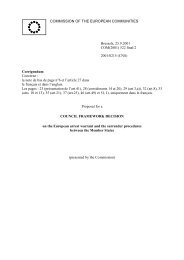Privy Council Review of intercept as evidence: report - Official ...
Privy Council Review of intercept as evidence: report - Official ...
Privy Council Review of intercept as evidence: report - Official ...
You also want an ePaper? Increase the reach of your titles
YUMPU automatically turns print PDFs into web optimized ePapers that Google loves.
182. However, even with these examples we have found some important<br />
differences that need to be considered:<br />
The interwoven nature <strong>of</strong> the current use <strong>of</strong> <strong>intercept</strong> by UK law<br />
enforcement and intelligence agencies, to combat serious crime and<br />
terrorism, and the cooperation and support they provide to each other<br />
does not exist to the same degree in Australia, Canada or the United<br />
States.<br />
These countries are not bound by ECHR. Such <strong>as</strong>pects <strong>of</strong> their<br />
systems (such <strong>as</strong> transcribing only that material which the law<br />
enforcement agencies intend to use in court, and using closed hearings<br />
in criminal proceedings) would need to be judged ECHR Article 6<br />
compliant if they were to be replicated in any UK system.<br />
US prosecutors are able to use <strong>intercept</strong> material together with pleabargaining,<br />
to “turn” defendants and to secure early guilty ple<strong>as</strong>. This<br />
experience might not be replicated in the UK, where plea-bargaining in<br />
the US sense is not permitted.<br />
183. The Common Law countries examined by this <strong>Review</strong> have tended to<br />
adopt a dual warrant approach, separating intelligence and law enforcement<br />
use <strong>of</strong> <strong>intercept</strong>. The Australian example, in particular, provides a number <strong>of</strong><br />
interesting ide<strong>as</strong> for how the UK could attempt to derive benefit from <strong>intercept</strong><br />
<strong>as</strong> <strong>evidence</strong>, whilst not unacceptably incre<strong>as</strong>ing the risk <strong>of</strong> disclosure to<br />
intelligence agencies and their sensitive capabilities and techniques, and<br />
allowing for cooperation between intelligence and law enforcement agencies<br />
to continue.<br />
184. The ‘Two Warrant Model’ which we have developed, and which is set<br />
out in greater detail below in Chapter VIII, h<strong>as</strong> been informed by the<br />
Australian approach.<br />
Chapter VII<br />
41


